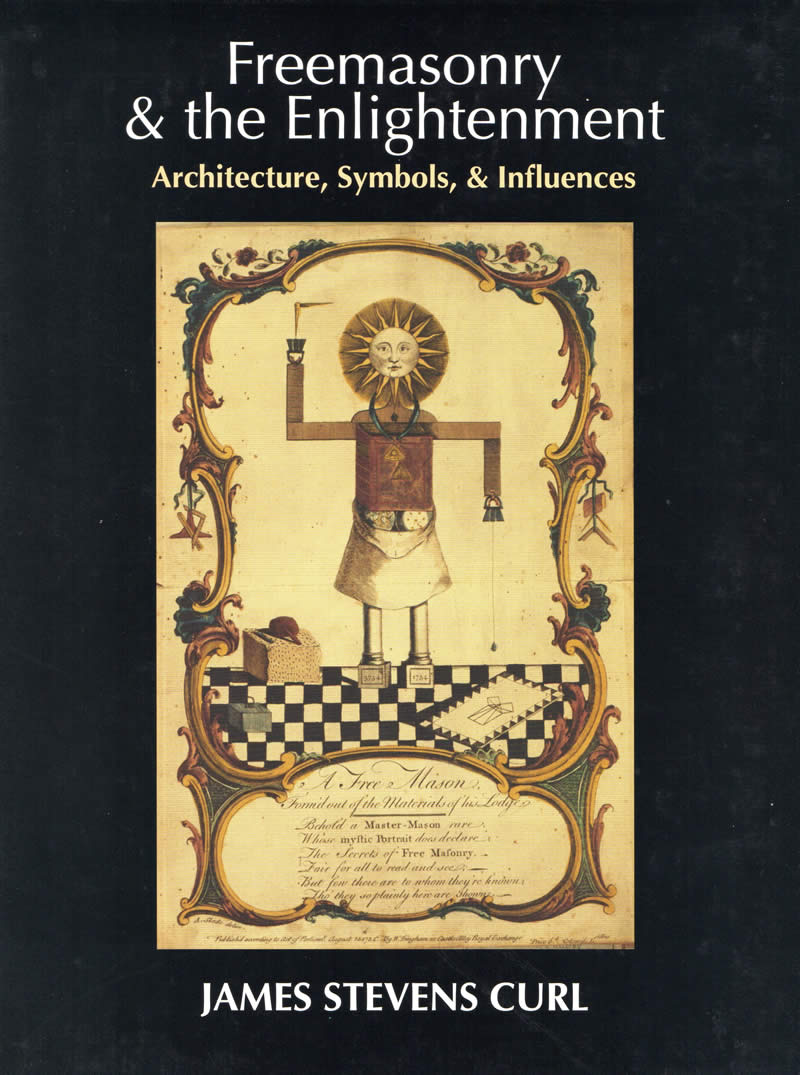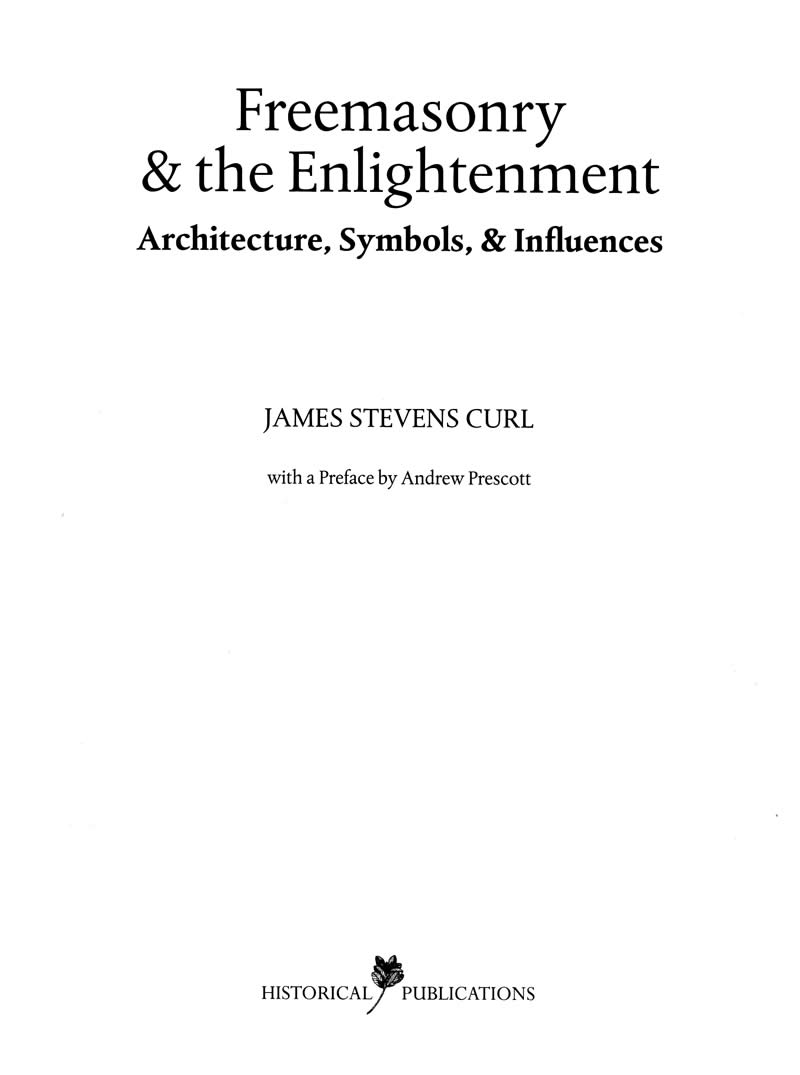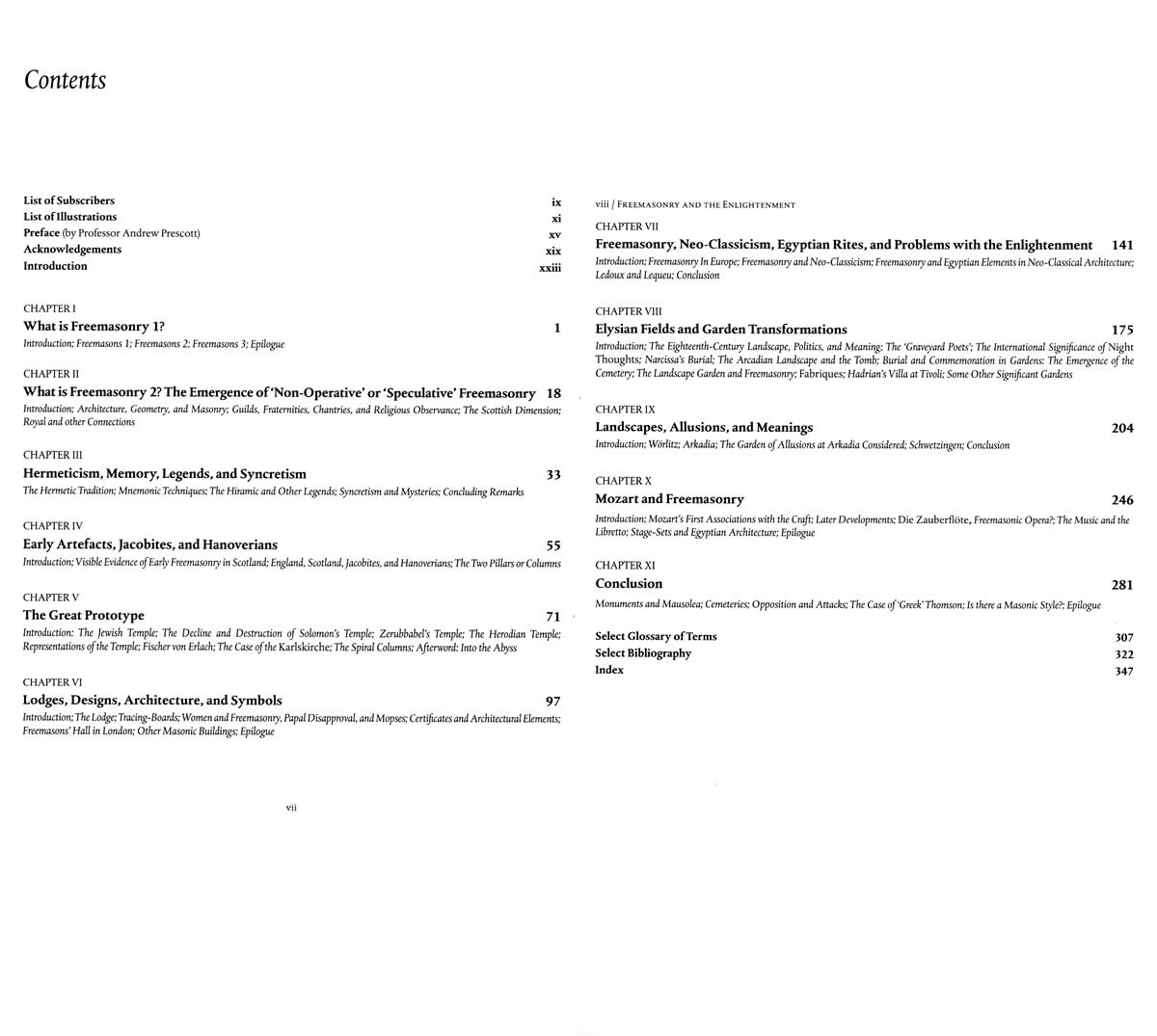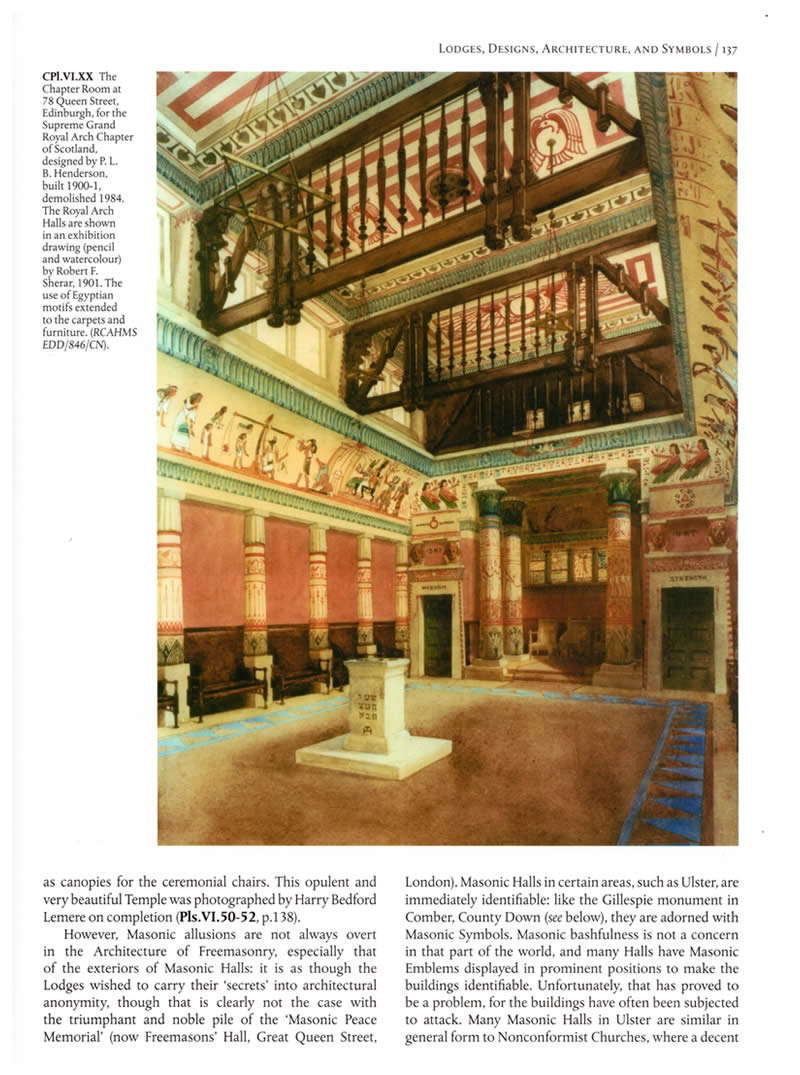Freemasonry & the Enlightenment: Architecture, Symbols, & Influences

Author : James Stevens Curl
Publisher : Holywood: The Nerfl Press, 2022
ISBN: 978-1-3999-2727-7 (pbk)
A fine softback reprint of a long out-of-stock classic, originally published to great acclaim
This superbly illustrated study of Freemasonry's influence on Western culture, especially in the 18th and early-19th centuries, has been recognised as one of the most original and important contributions towards a greater understanding of the Enlightenment published in recent times. Always a vivid and entertaining writer, Curl, éminence grise in the international network of historians of the Craft, and as usual wearing his learning lightly, astonishes and delights us with his stimulating explorations of themes concerning music, literature, philosophy, art, architecture, and artefacts, all expertly woven through the main narrative. Curl is a master of his subject and of an ebullient literary style, so the results of his copious researches are always presented in a highly accessible and witty manner, free from obfuscation or tediousness, further illuminated by his unerring choice of wonderful illustrative matter. Curl began his studies of Freemasonry in the 1970s, leading to publications that were an immensely useful, and sane, introduction to a field often fraught with speculative sensationalism. In this book, which originally came out in 2011, he hugely expanded his investigations, showing how aspects of Masonic ideas have permeated the design of buildings, parks, gardens, and cemeteries, as well as much else. His Glossary outlines some of the complex themes and iconographies of the Craft (notably the symbolic and moral significance of the Architect's and Mason's instruments and tools), and the extensive Bibliography contains an enormous amount of material to stimulate further research, not least into the curious phenomenon of antipathy towards Freemasonry by authoritarian closed minds and totalitarian bigots.
The illustrations are exceptional, and are accompanied by detailed captions (themselves an illustrated history of elements found in the Craft). It is a curious fact that many historians have avoided Freemasonry through prejudice, timidity, and perhaps cowardice, but in this work Professor Curl has grasped the nettle, and shows there is an enormous wealth of material available, much of it previously deliberately hidden from view or unaccountably ignored for reasons that defy logic, yet which will whet the most jaded of appetites.
Professor Andrew Prescott provided a sensitive Preface to this comprehensive revelation of neglected aspects of Western culture, and that is reprinted here.
Freemasonry & the Enlightenment is finely printed on 356 pp., with 71 colour plates, 227 b&w illus., and 24 figs.
This is a heavily revised edition to the groundbreaking book entitled The Art and Architecture of Freemasonry: an Introductory Study, published by Batsford (1991), hailed as a major contribution to scholarship: it won the coveted Sir Banister Fletcher Award as Best Book of the Year (1992). In the light of research and scholarship over the last twenty years or so, it was obvious that the 1991 volume would need considerable revision, so it was decided to re-write and greatly expand it, taking on board many aspects not covered in the original tome, and to add a large number of new illustrations and much fresh material in order to make the work once again available in an attractive form to scholars and the general public alike.
Earlier, less comprehensive manifestations of this book were:
The Art and Architecture of Freemasonry: an Introductory Study (London: B.T. Batsford Ltd., 1991, ISBN: 0-7134-5827-5 [hbk.]; Woodstock, NY: Overlook Press,1993, ISBN: 0-87951-494-9 [hbk.]; London: B.T. Batsford Ltd., 2002, ISBN: 0-7134-8745-3 [pbk.]; and Woodstock, NY: The Overlook Press, 2002, ISBN: 1-58567-160-6 [pbk.]).
Reviews
2011 edn.
'In Curl, the reader has an expert on European architecture and a scholar with a profound knowledge of Masonic history and its symbolism. ...This superb book is...written in...Curl’s own inimitable style... [his] ...erudite study should be considered essential reading...'
‘Curl’s books are always brilliantly illustrated to include the results of his wide-ranging learning, extensive library research and personal collecting. … This new exposure … stands as a permanent tribute to Curl’s enthusiastic scholarship.’
‘Delving into a subject area in which few are prepared to venture, …Curl amply and convincingly demonstrates that Freemasonry had widespread influence and application in several of the arts in the Age of Enlightenment, but especially architecture, with which it has many symbolic links… Curl is more qualified, and better placed, than anyone else to undertake this daunting project and also make far-reaching connection….The book is wide ranging…well illustrated…and written in the author’s familiar ebullient style, with trenchant personal observations and opinions…it stands as a commanding account of its subject that will not be superseded for years to come, and a fitting climax to an illustrious and greatly productive career.’
'Curl … has crafted a rich and stimulating exploration of Masonic history, ideology, symbolism and influence, ranging from antiquity to the twentieth century… Aspects of architecture and landscape (including gardens, monuments and cemeteries) are expertly woven through the main narrative, alongside themes touching on music (for example, a consideration of sets for operas such as ‘The Magic Flute’), literature, philosophy, art and artefacts. This is, indisputably, an impressively learned work.'
'It is astonishing how many lacunae still survive in the way in which the history of architecture is recalled and recorded... Curl’s view is that this state of affairs is due to the fact that Freemasonry draws its inspiration from well before the dawn of the monotheistic religions, and that its aims are too broad, too liberal, and too indefinable to sit comfortably with political or religious establishments....Curl...is certainly right in claiming that blatant references to Masonry in architectural style have generally been ignored by critics who cannot see beyond conventional definitions: he produces countless examples of extraordinary designs which ought to be much better known than they are. ... Curl’s discussion of the relationships between [landscape complexes] and developing philosophical and political ideas is fascinating... In common with all of Curl’s books, the scholarship is exemplary.'
'In the small but very active international network of historians of Freemasonry, Curl is an éminence grise. His beautiful publications … are manifold, and Freemasonry has a distinct place in his œuvre…. Freemasonry & the Enlightenment…is an enriched and expanded development of an earlier work … His thesis is that the influence of the order has been grossly under-estimated and that Masonic lore holds a considerable place in the buildings and imagery of the 18th and 19th centuries.'
'This book is essential reading for all those interested in the long eighteenth century or in architecture more generally… Curl identifies the freemasonry of the eighteenth century very much with liberal and tolerant philosophy. He is at pains to draw distinctions between the freemasonry of continental Europe and that of England and Scotland. … Professor Andrew Prescott, who provides the foreword to the book, has elsewhere called it magisterial. That it is, but its real legacy will be the arguing of its concerns in higher courts.'
'If you only know the Freemasons through the distorted accounts of caricaturists, this ... is a powerful corrective. By linking Freemasonry with the Enlightenment, the book’s very title is making a substantial claim for regarding this confraternity...as central to the European intellectual movements of the day… Curl, always a vivid and entertaining writer, has no doubts on this matter: “Freemasonry played a central role in the Enlightenment”, he asserts in his introduction, adding: “the fact that so many so-called ‘academics’ have avoided the issue is very peculiar, indicative of cowardice, dishonesty, or worse”. Perhaps Curl should offer a prayer of thanks for such cowardice, because the academic failure he detects has allowed him the opportunity to get in first.'




 LinkedIn
LinkedIn  Wikipedia
Wikipedia